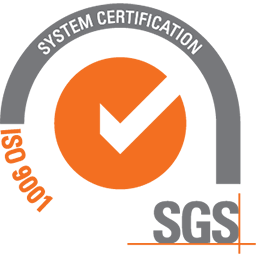Static electricity is an imbalance of electric charges within or on the surface of a material. The charge remains until it is able to move away by means of an electric current or electrical discharge.
But why are you getting shocked when you touch some garments? Why do these charges accumulate?
It can happens that body releases static electricity which derives from a power difference between a positive and a negative charge. It means, when we touch an object/surface loaded electrostatically, it will create a potential between us and the object. More the object is loaded, more the potential is strong and the shock will be stronger. This phenomenon is generated from the neutralization between the 2 charges, which will try to rest the balance. It is nothing more than the phenomenon of the atmospheric lightning on a very small scale.
Static electricity is a superficial phenomenon and it is generated when two or more surfaces come in contact with each other and are separated again. This causes a kind of division or a negative electron transfer, and it is bigger if the pressure or the separation speed is higher.
Moreover, we say that some people are “more electric” than others because they wear garments with synthetic fibres, such as nylon or polyester, insulating fibres that tend to accumulate electric charges. Moreover, dry skin tend to accumulate charges, so it is recommended moisturise your skin in order to reduce this phenomenon.
During cold or dry seasons this phenomenon is more frequent.
Dry air promote the accumulation of positive or negative electric charges, because it is free from moisture (very low percentages of water, conductive substance). It doesn't have the strength to dissipate and eliminate the accumulated charges. For this reason it is recommended not to leave the garments in the dryer for a long time.
So, you can notice that the water, present on our skin or in the air, tend to reduce this phenomenon. So in the drying phase, where you have to reduce the percentage of water, you have to act in a different way, with the right products. But in the wash with the washing machine, where there is a lot of water, why can we notice this effect?
In case of home laundry wash, electrostatic charges are created as a result of the contact of garments among them. Another factor which leads to the accumulation of these charges is the presence of detergents that load negative charges on fibres.
In the dry cleaning, where water is not used but it is used a non conductive solvent, we notice a similar effect to the one of the dry air. This means that there is nothing that can dissipate charges. However, during this process, we have a strong garments’ rubbing and a use of concentrated detergents. So in the dry cleaning we will notice a much greater static electricity effect compared to water wash.
In the laundry world both in the dry cleaning and laundry, the electrostatic charges problem mainly creates a hair transfer effect among garments, in addition to the annoying problem “shock” that we feel. So, eliminate the problem of electrostatic charges will reduce also the cleaning and brushing process of garments which present accumulated hair.
Eliminate electrostatic charges from garments avoids also the appearance of wrinkle on garments and makes the ironing easier.
According to the cleaning and brushing process, we have to act in a different way. So it will be really useful to eliminate these charges in order to make our job easier.
Tintolav has developed specific solutions to solve the static electricity problem on garments, both for professional and domestic world.
Dr. Conedera’s advice
DRY CLEANING
For dry cleaning laundries, perchloroethylene is a dielectric solvent, i.e. non-conductive: during wash the garment negatively charges itself and perc is not able to dissipate these charges. For this reason, washing wool garments with other garments, it could happen to see clear hair transfers, difficult to eliminate after wash.
We present you two ideal products to reduce electrostatic charges created during the wash.
 |
ACTIV SUPERSTATDry cleaning detergent with antistatic, softening and odour eliminating effect.
How To Use: Activ Superstat has to be used when the machine is full, in the second bath, dosing it in the button trap or with automatic dosing. In the washing programme exclude the passage in the filters and in the filtering system. Quantity for use: |
 |
TINTOSTATICAntistatic additive for solvents:
How To Use: Tintostatic is used with machine fully loaded, during the second bath, dosing it into the bottom trap or with automatic dosage. Quantity: |
LAUNDRY WASH
Even if the problem is less evident, you can solve the problem of the static electricity (often due to the hard water) by using a normal washing machine and adding one of the HygienFresh softeners, available in 10 fragrances: Caresse Blanche, Fior di Loto, Fresh Lavender, Latte di Rosa, Vanilla Lemon, Talco Fiorentino, Muschio Bianco, Note di Pulito, Soffio Tropicale e Orchidea Selvatica.
Moreover, Hygienfresh softeners neutralize the charges released by the detergent, by inhibiting their contribution in the creation of the static electricity.
 |
HYGIENFRESH SOFTENERSHighly concentrated scented softeners with a protective effect on garments.
|
AFTER WASH
You can find static electricity problem even after the wash cycle. For this reason we have developed different solutions to use starting from the drying phase, but even after having placed the garments in the wardrobe or after having worn them.
 |
SINGLE DOSE SCENTED STRIPS FOR DRYERAntistatic scented strip for the dryer with Fresh Laundry fragrance. It avoids fluff transfer and leave the clothes soft How To Use: Put the clothes in the dryer. Take the strip out of its bag and place it in the middle of the drum. |
 |
ANTISTATEXAntistatic spray for garments
Directions for Use: |
 |
MIRACLEWrinkle remover spray with stretching action without ironing. White Musk fragrance
How To Use: Shake well before use and spray evenly on parts to treat and leave act for at least 10 minutes. |




















